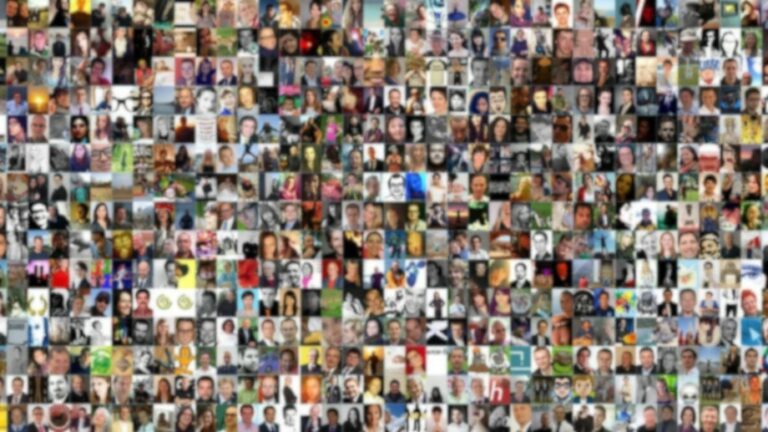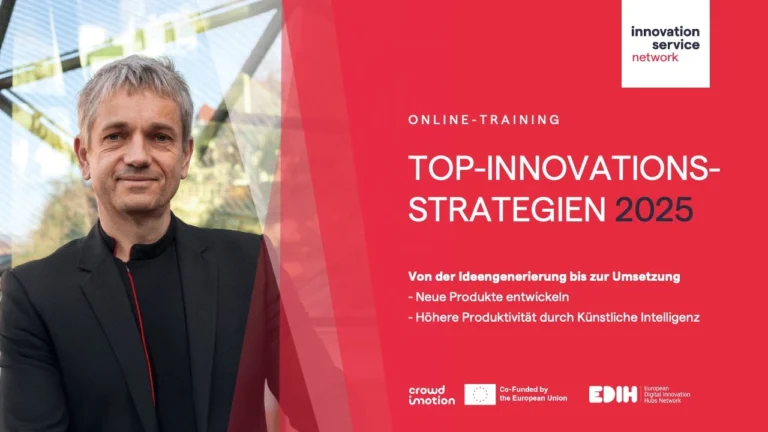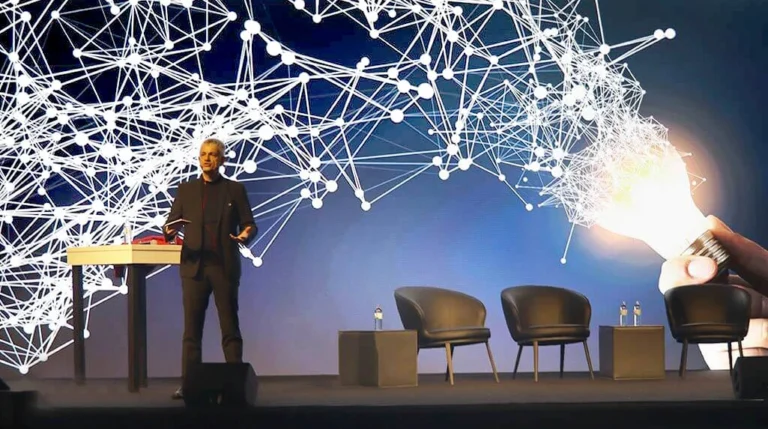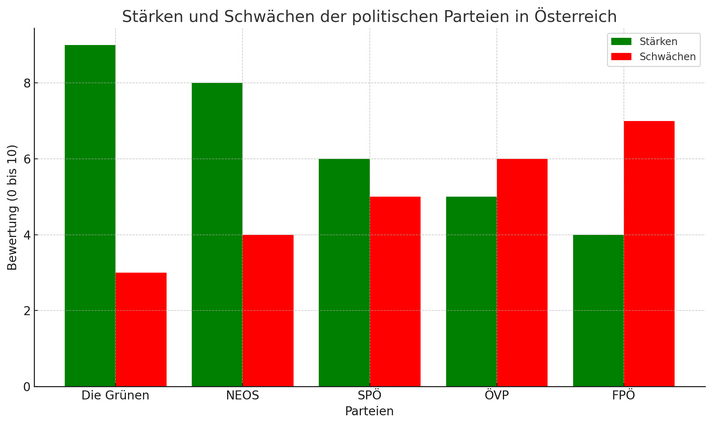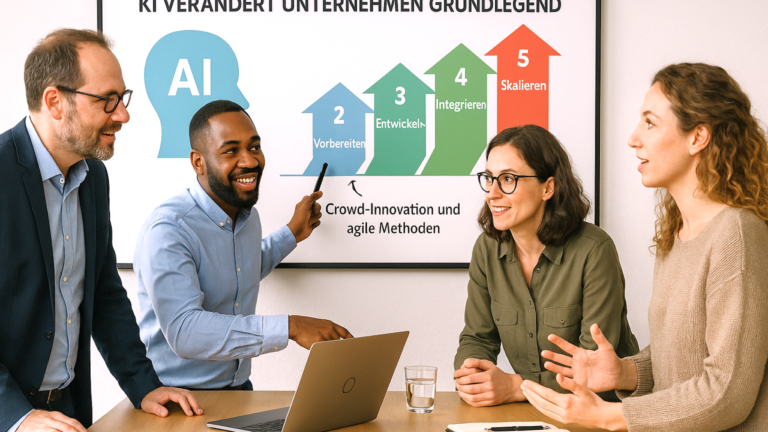
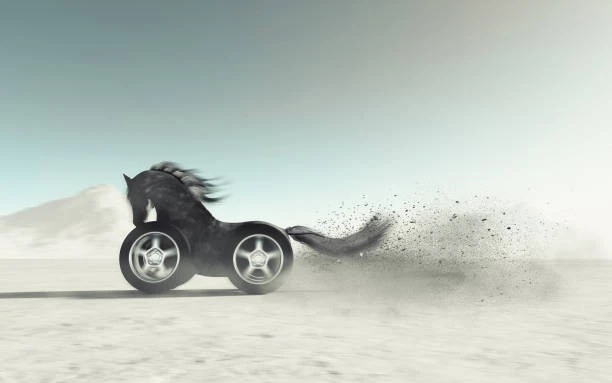
We are currently heading towards December 23 and are looking forward to a few quiet days. In previous years, the intensity of digital communication was close to zero on this day at the latest, apart from a few Christmas newsletters. The time until then is well filled with tasks and deadlines, everything still has to be finished and the time pressure is very high for some. The question arises as to whether this has always been the case and how it will continue in the future.
A few months ago, I had a conversation with one of my inspiring mentors and colleagues, Professor Bruno Buchberger, about the current dynamics of innovation, and I would like to dedicate part of it to today's article. In his book manuscript entitled "Science and Meditation: The Invention of the Future", Bruno addresses the question of whether it is already 5 to 12 or 12 to 5? (his lectures can be accessed via the link)
He takes a look at the current global challenges, in particular climate change. I had the great pleasure of being able to give Bruno Buchberger feedback on his book manuscript and again learned an enormous amount while reading it. At this point, I would also like to draw your attention to a radio interview with Prof. Bruno Buchberger and Prof. Hermann Maurer, which I had the pleasure of presenting on ORF Ö1 in the Matrix series entitled "Legenden im Unruhezustand".
"We have maneuvered ourselves into a difficult position," writes Bruno in his unpublished publication. In his opinion, we need to invent a lifestyle that combines scientific and technological innovation with a deep intuitive harmony with nature. Getting there requires a deep understanding of nature, which can be gained in two ways: The path of science and the path of meditation (which I am currently exploring for myself). I don't want to go into the area of meditation today, but I would like to provide an explanation for the innovation dynamic described at the beginning.
The path of science and innovation is a three-step process that has been cultivated over many centuries: "Observe - Think - Act". This path leads to intellectual understanding and, building on this, to practical interaction with nature. A sober look at global problems shows that we have overshot the mark in some areas in favor of our quality of life. The path of science and innovation is enabling ever greater domination over nature in ever faster cycles ("Subdue the earth!"). The uncritical exploitation of this possibility can create an environment that deprives us of our own livelihood.

The illustration shows the aforementioned three-step process of "observe - think - act". In principle, this process is repeated every day in an endless loop. Here is an example: In nature, for example, we see an apple tree (illustration) with a ripe apple hanging on it, which smiles at us. Our senses are in contact with the surroundings. The desire to eat the apple increases and inspires our solution energy and creativity. We observe that the height of four meters is not within our reach. We think about it and the solution of getting a ladder in the cellar to overcome this height is obvious. We then act according to the thought model or plan: we climb the ladder, pick the apple and enjoy its taste.
The very simple example uses very simple aids and tools. Applying a known solution ("technology") is a simple thought process. Inventing the principle of a suitable technology can be a long, difficult cycle of observing - thinking - acting. This brings us to the topic of innovation management. The desire to find even better solutions is part of human nature. In the case of the "apple-picking problem", there are now a large number of machine solutions that can clear an entire apple tree in a short space of time.
The "observe - think - act" cycle has been accelerated enormously in recent years by science and technology. It is no longer just humans with their brains, sensory organs and hands who intervene in development. We have invented methods and tools that allow us to observe microstructures (e.g. through microscopes). We have used mathematics and microprocessors to create powerful thinking aids, and actuators have long since enabled us to use robots in industrial production.
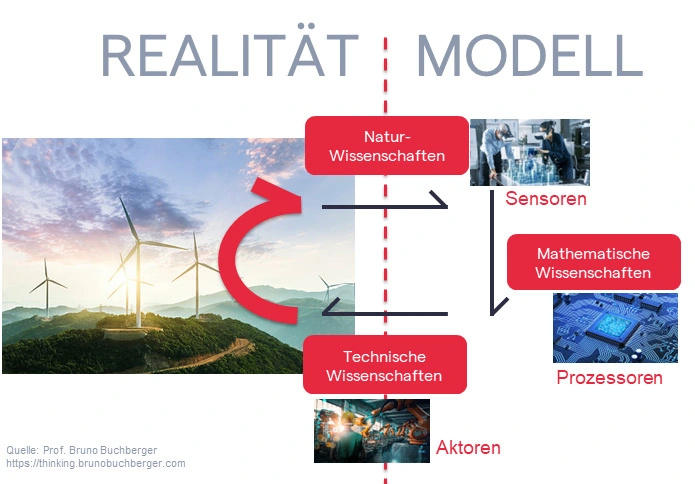
Thanks to these technological innovations created by science and human ingenuity, we are now able to intervene in processes and solutions at high speed and improve them. The cycle of "observe - think - act" supported by devices in recent decades has generated an enormous amount of new knowledge (e.g. processes in biological cells), created a whole host of new products (cars, education, etc.) and built up a huge global social and economic system.
However, the most important consequence of the simple observation of the cycle based on the illustrations for the evolution of human society is that the process of "more", "deeper and deeper", "further and further", "earlier and earlier", ... i.e. the speed of innovation is constantly increasing! One driver for this is not only new technologies and solutions for "observing - thinking - acting" in the three-step process, but also the fact that the additional process of reflection (red arrow in the illustration) means that the method of this three-step process is also experiencing a higher level of development and therefore further acceleration. In recent decades, this acceleration of the "innovation spiral" can be clearly experienced within a decade.
Technological leaps enable an even greater intensity of change and ultimately also demand this of us humans. If you were born more than 250 years ago, you will not have experienced any technological changes during your entire lifetime. If you have already witnessed the introduction of the first microcomputer, you can look back on a series of technological leaps since 1980 and will experience many more in the future. Technology and innovation provide the basis for our prosperity, but they also demand increasing mental and physical performance.
The growth and changes in science, technology and the economy in the last decade are as great as those of perhaps the last three decades before that. But they are probably also greater than those of the century before that and also greater than those of the millennium before that. We are therefore experiencing a disproportionately high (exponential) rate of change, which can push our human abilities with (still) two eyes, two ears and two hands, etc. to their limits. Sie sind aber wahrscheinlich auch größer als die des Jahrhunderts davor und auch größer als die des Jahrtausends davor. Wir erleben also eine überproportionale (exponentielle) Veränderungsgeschwindigkeit, die unsere menschlichen Fähigkeiten mit (nach wie vor) zwei Augen, zwei Ohren und zwei Händen, etc. an die Grenzen bringen kann.
Conclusion: We need to make dealing with change and the discipline of innovation management an integral part of our work processes within the company.
It is in the nature of human beings to always look for and develop new solutions and improvements. This cycle cannot be stopped (e.g. to stop climate change). However, it is up to us to deal with innovations sensitively so that we do not deprive ourselves of the basis of life. We are currently seeing an increased awareness of the use of resources and the circular economy. So I am positive that we will be able to solve our current and global problems soon enough.
Are you yourself an innovator and accelerator of the process? How do you experience the speed of change in your company? How do you deal with it and what methods and tools do you use?
I wish you a wonderful and relaxing Christmas with your family this coming Sunday, December 24th. I'll be back with the next issue of "Leiden:schafft INNOVATION" in the new year!
As always, I look forward to feedback and wish you a relaxing and creative Sunday!
Reinhard Willfort, Innovation Doctor, www.willfort.at

